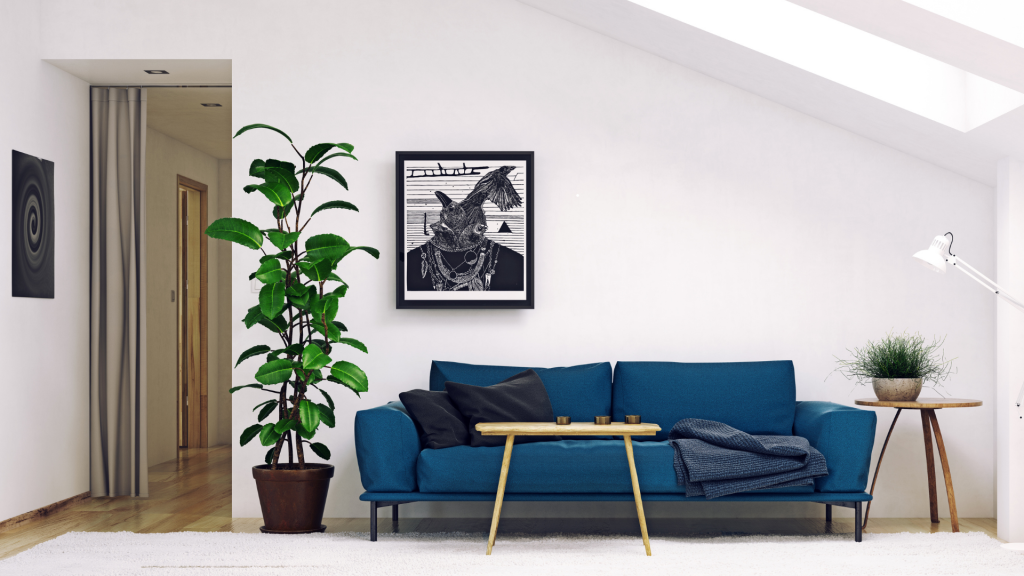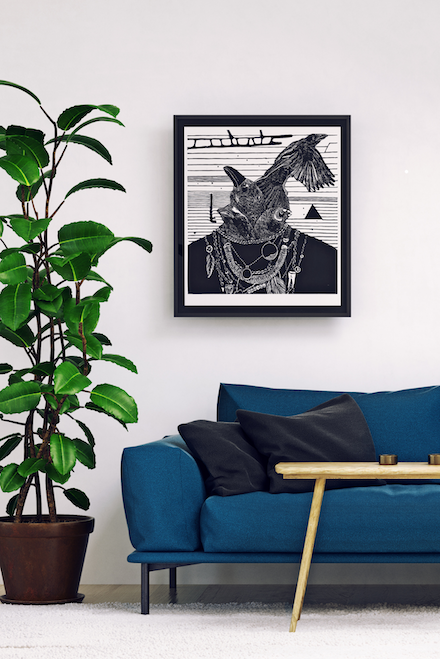Interior design isn’t just picking out paint swatches and cushion covers (although that is a fun part of the job!) and hoping for the best. Professional interior designers have a strong understanding of how to create amazing, eye-catching spaces by following a set of basic home design principles. These are known in the industry as the Seven Elements of Interior Design, and by understanding how they work, you can consistently create amazing designs.
So, what are the seven elements?

1. Space
This is arguably the most important of the home design principles and is the foundation for all design ideas and concepts. From creating floor plans to choosing furniture, the space will determine your entire design. The key is to strike a balance between negative and positive space. Positive space contains furniture and other objects, while negative space is left empty – combined they allow the room to breathe and rest easy on the eyes. Having a balance of the two is ideal, however opting for more of one than the other can help you achieve different looks. Minimalist designs often use more negative space, while maximalist interiors incorporate much more positive space. Try looking to upcoming interior design trends for ways to inspire you in how to use the space, too.
2. Light
The next element that should influence your design is the amount of light in a space – both natural and artificial light. Besides their actual function, lighting also help set the atmosphere for the space. Consider how you want each space to feel as well as what the space will actually be used for.
As an example, the lighting you design for a kitchen would be entirely different to that of a living room or bedroom. The kitchen is a room that requires task lighting, so opting for spotlights or brighter overhead lighting would provide adequate light for tasks to be carried out; whereas a living room would instead opt for moodier lighting using warmer bulbs and lamps throughout to set the correct ambiance. For versatility, dimmers are also a great option to include in your design. Statement lighting is a great way to highlight a part of the room or add a dramatic finish to the space.
3. Lines
Using lines to guide the eye around a room is another key home design principle that interior designers use to direct their designs. These can be horizontal, vertical or dynamic – and each of these lends themselves well to certain interior design styles.
Horizontal lines are key to creating a sense of formality, stability and structure in a space. These are created using strong lines through tables, chairs and flooring and can help make a space feel appear larger and wider. Vertical lines help draw the eye upwards, giving the illusion of a taller space. Anything from the doors and windows to wallpaper and panelling can help achieve this look.
Dynamic lines include curved, diagonal and zigzag lines that are eye-catching and breathe a new lease of life into a space. Structures such as staircases can achieve this and can be enhanced with contrasting stair runners or banisters for added depth and interest. There is a balance that needs to be met with this type of line however, to prevent it becoming too chaotic and overwhelming.
4. Texture
Texture is one of the main home design principles that can often be overlooked by anyone who isn’t familiar with these key interior design rules. Texture refers to the look and feel of an object or accessory and can be used in several ways to achieve different looks. When you use two contrasting textures together, it adds weight, depth and interest to a space to help draw the eye in. Using both hard and soft textures will create a healthy balance in a design.
5. Form
Form not only refers to the shape of a room, but the objects within it, too. These can be geometric shapes such as harsh, strong lines – or natural, more organic forms. Form is a functional element of design and is key to bringing together a cohesive design. Placing objects around a focal point in a space is a clever way to highlight a statement feature such as a fireplace or bay window and when used correctly in a design, is a technique of telling the story within a space and allowing each area of the room to flow together.
6. Colour
Colour is one of the more obvious home design principles, however it may have more of an impact than you might think. Colour psychology plays a huge role in elevating a space and how we feel when we’re using that space. For example, red is a colour that can energise, excite, and evoke feelings of passion. However, too much red can also cause feelings of anger and unease, so it is key to balance these bolder colours out with more neutral colours throughout the space.
Another important interior design rule to remember is that using darker colours can make a room feel smaller, however incorporating them in smaller doses such as through a feature wall or accessories is a great way to still use these colours in trickier spaces.
7. Pattern
Patterns is the final home design principle to consider in your design. Patterns work together with colours and shapes to add interest, or tie in various areas of the room together. Look to painting techniques, wallpapers, curtains and fabric upholstery for ways to include pattern in your design. Consider the space you’re working with to determine where to use pattern as well as how much to use it.
Follow us on Instagram and Facebook for more tips and inspiration!
If you’re interested to find out how our interior design services could work for you or your business, get in touch today.
